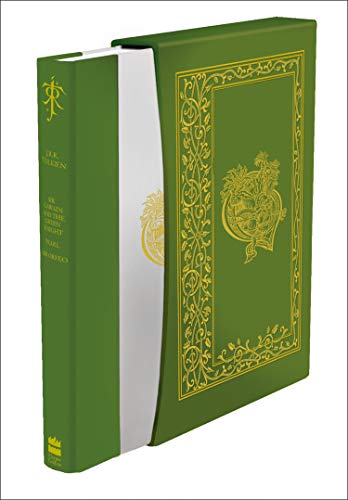Beren and Lúthien
19 Oct, 2016
2016-10-19 9:39:28 PM UTC
2016-10-19 9:39:28 PM UTC
(It was suggested that it needs its own thread.)
Here is the American press release:
http://www.hmhco.com/media-center/pre ... tolkien-beren-and-luthien
The only way I can parse it is that the main body of the book, the illustrated portion, is the version from The Book of Lost Tales, Part Two, followed by a long appendix by Christopher Tolkien exploring the further development of the story through “passages … from later texts”.
It is an odd choice, more a “proto-Beren and Lúthien” than anything else. It is a beautiful and fun text, but, Beren is not a mortal man in that version, nor is there any character named Lúthien. The only possible explanation that I can think of is that the publishers insisted, or Christopher was himself convinced, that it had to be (a) prose, and (b) complete.
Otherwise, it’s impossible not to conclude that ‘The Lay of Leithian’ is the masterpiece, the great and definitive version of this tale, which, even though it lacks an ending, is one of the longest and most substantive of all Tolkien’s Middle-earth writings. The more obvious solution would have been to supply a prose ending from the Silmarillion tradition (not at all unlike what was done to create a middle section for The Children of Húrin).
Here is the American press release:
http://www.hmhco.com/media-center/pre ... tolkien-beren-and-luthien
The only way I can parse it is that the main body of the book, the illustrated portion, is the version from The Book of Lost Tales, Part Two, followed by a long appendix by Christopher Tolkien exploring the further development of the story through “passages … from later texts”.
It is an odd choice, more a “proto-Beren and Lúthien” than anything else. It is a beautiful and fun text, but, Beren is not a mortal man in that version, nor is there any character named Lúthien. The only possible explanation that I can think of is that the publishers insisted, or Christopher was himself convinced, that it had to be (a) prose, and (b) complete.
Otherwise, it’s impossible not to conclude that ‘The Lay of Leithian’ is the masterpiece, the great and definitive version of this tale, which, even though it lacks an ending, is one of the longest and most substantive of all Tolkien’s Middle-earth writings. The more obvious solution would have been to supply a prose ending from the Silmarillion tradition (not at all unlike what was done to create a middle section for The Children of Húrin).













 29
29 10.50K
10.50K